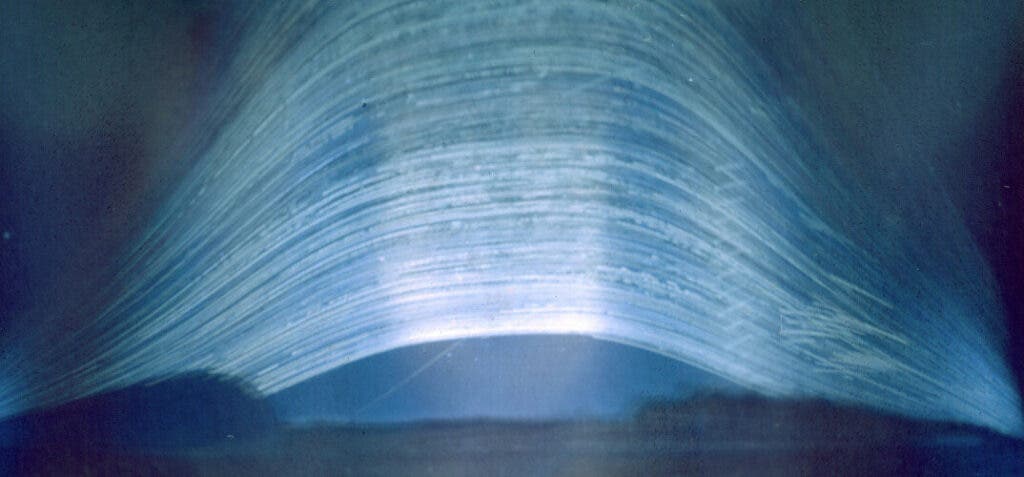It took duct tape, a 500ml cider can, and Ilford Multigrade photographic paper to construct the makeshift camera. The result may look blurry, but to the trained eye, the arced lines are not an accident: they represent trails of the sun as it rose and fell, going higher in the summer and lower in the winter; 2,953 of these trails, to be precise, because that’s the exposure time of the photo: 2,953 days.

The image was taken by Regina Valkenborgh, who began capturing it towards the end of her MA Fine Art degree at the University of Hertfordshire in 2012. Valkenborgh was interested in capturing photos without the use of modern technology. She prefers beer or cider cans to soft drinks because they’re taller and create a better image. The can is used as a pinhole camera.
She trialed exposure periods of 6 months and one year, the latter turning much different from the former. But one particular setup, she forgot about. The equipment was laid in place in 2012 at the University of Hertfordshire’s Bayfordbury Observatory. and forgotten about. The makeshift camera apparently remained static until late 2020, when it was discovered by the Observatory’s Principal Technical officer, David Campbell. — a matter of pure luck, and ironically, contradicting what Valkenborgh intended for the image (which was to spin it around and look at different parts of the sky).
“It was a stroke of luck that the picture was left untouched, to be saved by David after all these years. I had tried this technique a couple of times at the Observatory before, but the photographs were often ruined by moisture and the photographic paper curled up. I hadn’t intended to capture an exposure for this length of time and to my surprise, it had survived. It could be one of, if not the, longest exposures in existence.”

Long exposure photography is a technique that uses a long-duration shutter speed to sharply capture the stationary elements of images while blurring, smearing, or obscuring the moving elements. Usually though, this longer period means a few seconds or at most, a few hours.
Extreme long exposure photography has been carried out before, notably by German photographer Michael Wesely, whose work includes cameras with exposures of up to 34 months. But as far as we could find, Valkenborgh’s is the longest exposure photography ever taken — and it will be hard to break her record.
The basic idea of using a pinhole is straightforward, but you need to leave the camera undisturbed for the entire duration. A single perturbation could ruin a years-long exposure photography.
Valkenborgh now works as a photography technician at Barnet and Southgate College.






